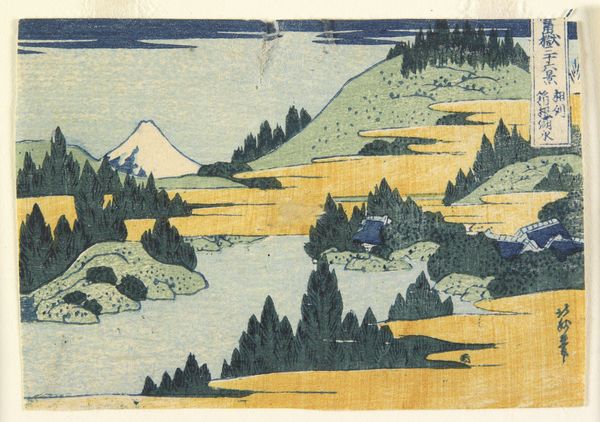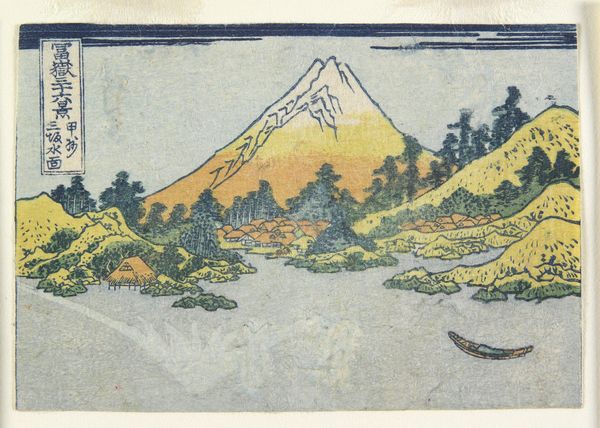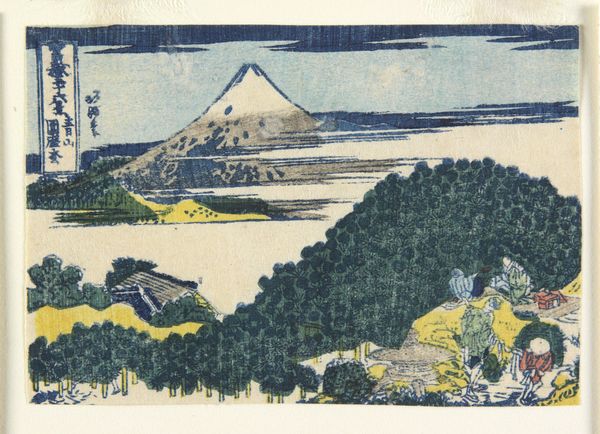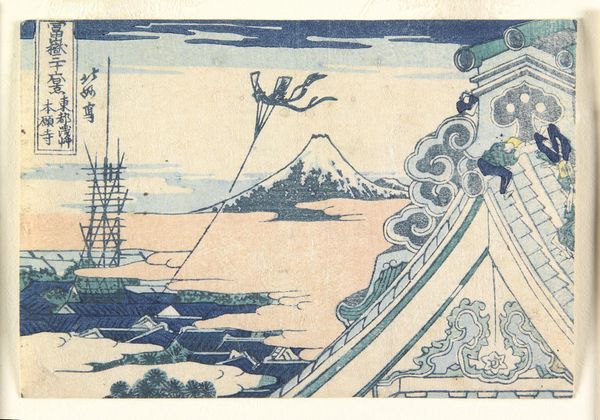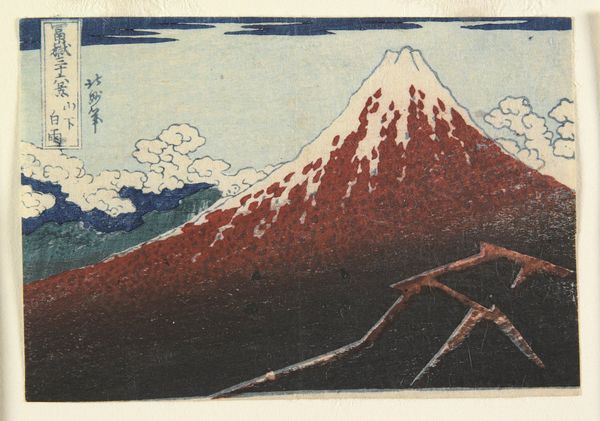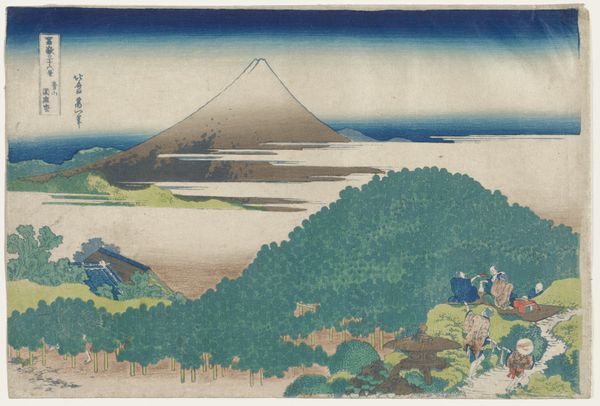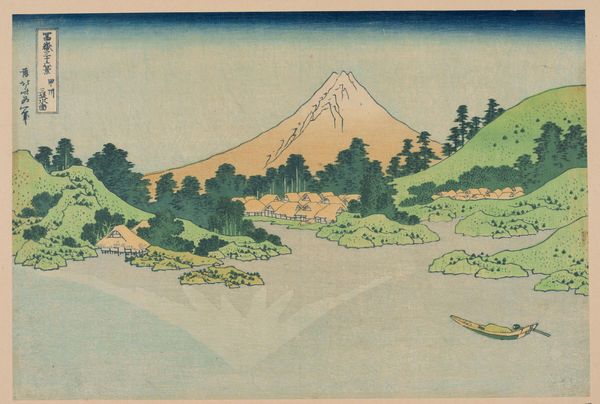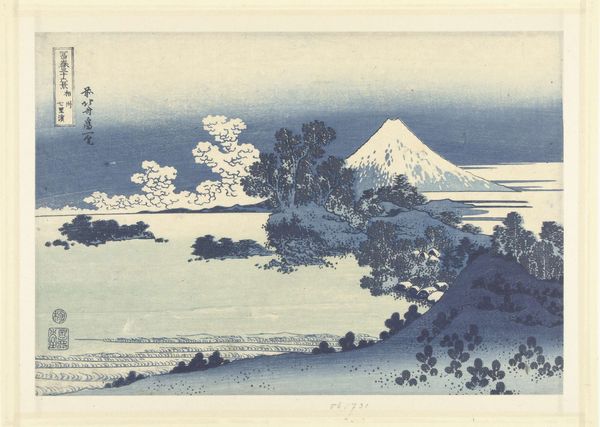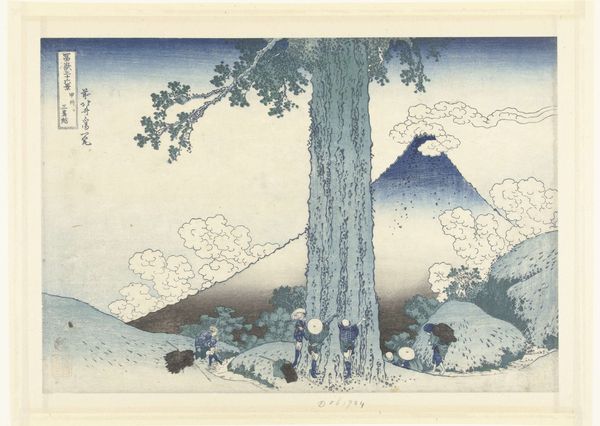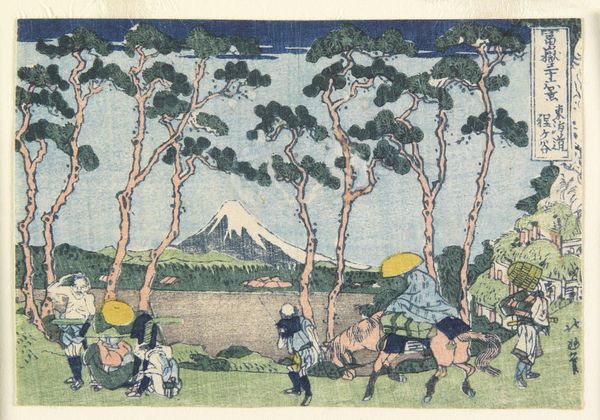
print, paper, ink
# print
#
landscape
#
ukiyo-e
#
paper
#
ink
#
coloured pencil
Dimensions: 3 1/8 × 4 5/8 in. (8 × 11.8 cm) (image, sheet, yatsugiriban)
Copyright: Public Domain
This is "Left of Umezawa in Sagami Province", a woodblock print by Hokumyō, created around the 1830s. At first glance, we see an idyllic landscape dominated by Mount Fuji, but it is the cranes that truly capture our attention. In Japanese art, the crane is a powerful symbol of longevity and good fortune. Note how they appear both grounded, wading in the water, and in flight, soaring towards the sacred mountain. This duality mirrors a deeper human desire to be both rooted in the present and aspiring towards higher ideals. This motif appears throughout art history: the Egyptians associated them with the sun god Ra. The Greeks saw them as symbols of vigilance and order. The emotional resonance of these symbols is palpable. Such imagery taps into our collective memory, evoking feelings of hope, renewal, and the timeless connection between humanity and the natural world. The image of the crane has metamorphosed over centuries, yet it continuously reappears, reminding us of the enduring power of symbols.
Comments
No comments
Be the first to comment and join the conversation on the ultimate creative platform.
